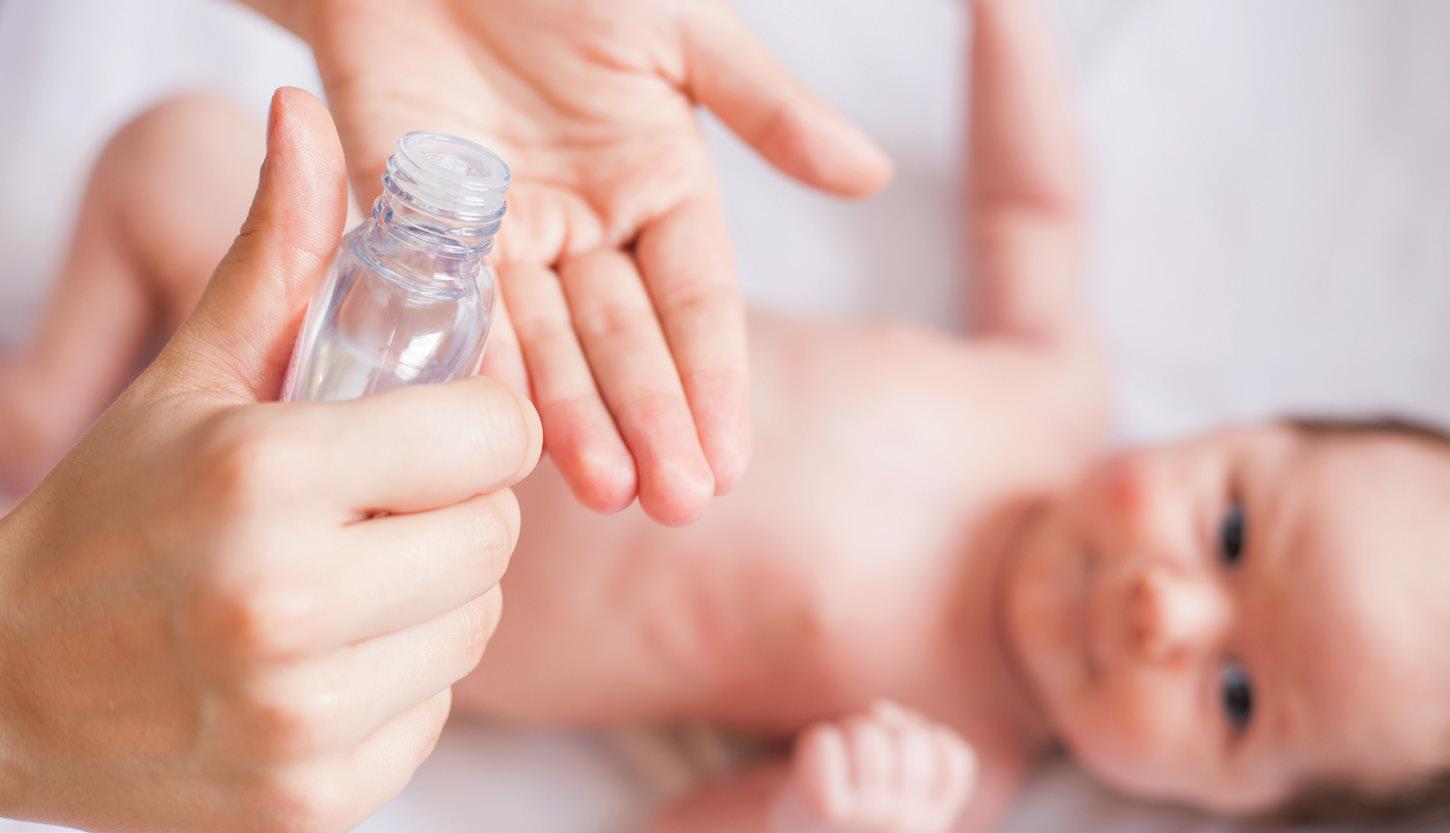A Beginner’s Guide to Infant Massage
Did you know that one of your baby’s first senses to develop is touch? Your touch can be both calming and stimulating to your baby and create a positive interaction for both of you. Massage can help with stimulation, sensory input, brain development, bonding, weight gain, relaxation, reduced gas or intestinal pain, and behavior regulation. It also helps you to learn your infant’s cues.
Massage should be done with your infant undressed so they can feel your touch on their skin. The room should be draft-free and warm enough to keep your baby from getting cold – at least 75 degrees F. Your baby can also lay on a warm blanket.

If you choose to use oil for your massage, make sure it is an edible oil. Coconut oil is a good choice. To decrease the risk of allergic reactions or clogged pores, stay away from nut oils, baby oils, or mineral oil. It is typically best to avoid massage for 45 minutes after a feeding to reduce the chance of your infant spitting up.
When massaging your baby, start at the legs, followed by the tummy, chest, arms, face, and back. Here are some simple massage techniques.

LEGS AND ARMS
• Indian Milking: Support baby’s foot with one hand and wrap your other hand around baby’s leg. Milk from the top of the thigh to the ankle.
• Squeeze and twist
• Small circles around the ankle and wrist bones
• Thumb over sole of foot or palm of hand
• Squeeze each toe or finger
• Swedish Milking: This is the same motion as Indian Milking but in the opposite direction. Support baby’s foot with one hand and wrap your other hand around baby’s leg. Milk from ankle to thigh.

TUMMY
Note: It is important to do tummy massage in a clockwise direction to follow the path of digestion.
• Water Wheel
• Sun Moon
CHEST
• Open Book
• Butterfly
FACE
• Open Book
• Thumbs over eyes
• Push up on bridge of nose, down under eyes as you cross the cheeks
• Small circles around jaw
• Over ears and under chin
BACK
• Back and forth
• Swooping to bottom
• Swooping to ankles
• Small circles over back
Massage can become part of your daily routine. Paying attention to your baby’s cues will let you know if they are ready for a massage. For example, after vaccinations, your baby may not want their legs rubbed. That’s okay! You can skip that part of the massage. The important thing is to pay attention to your baby’s cues and make the massage an enjoyable experience for both of you.